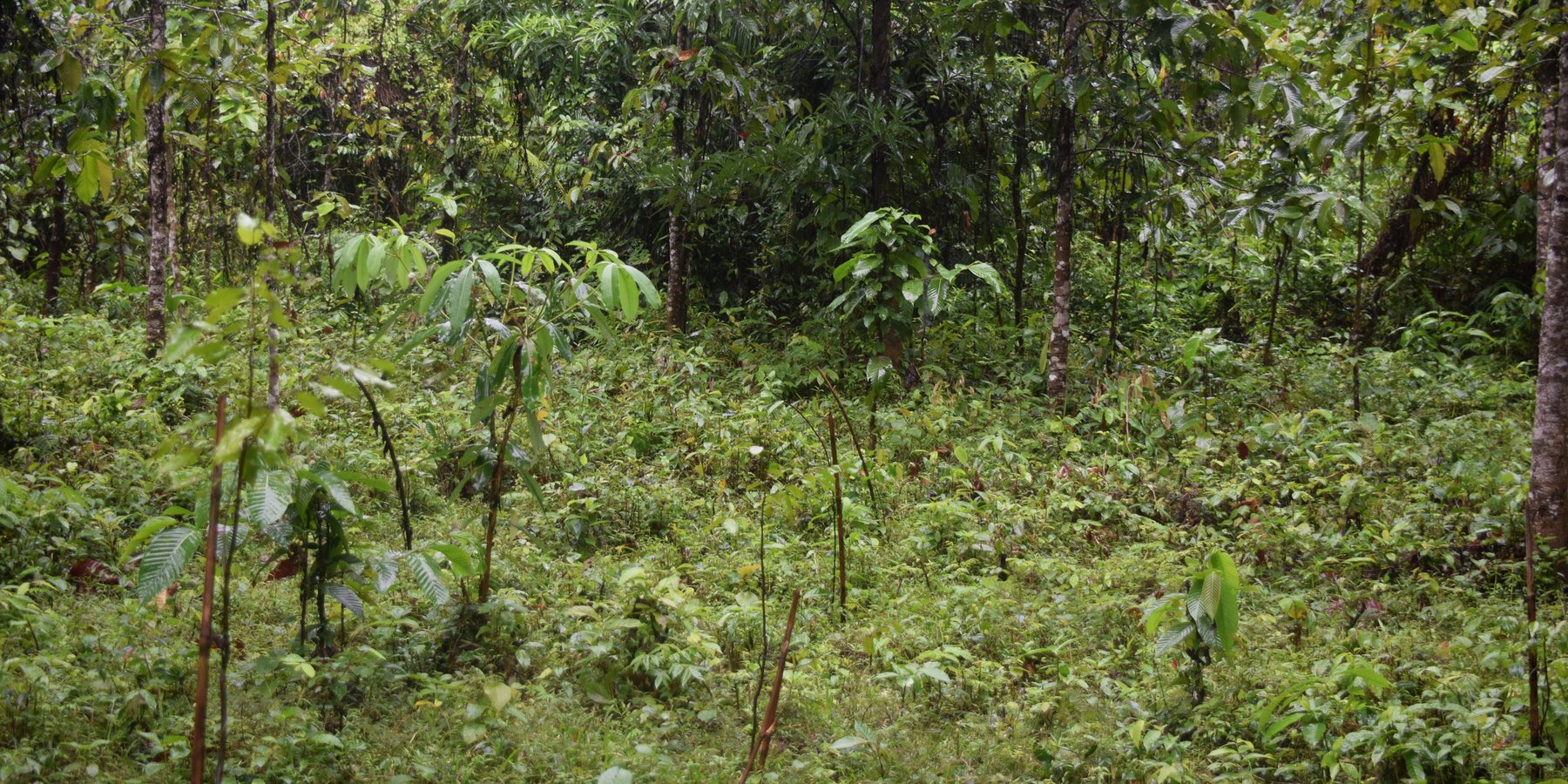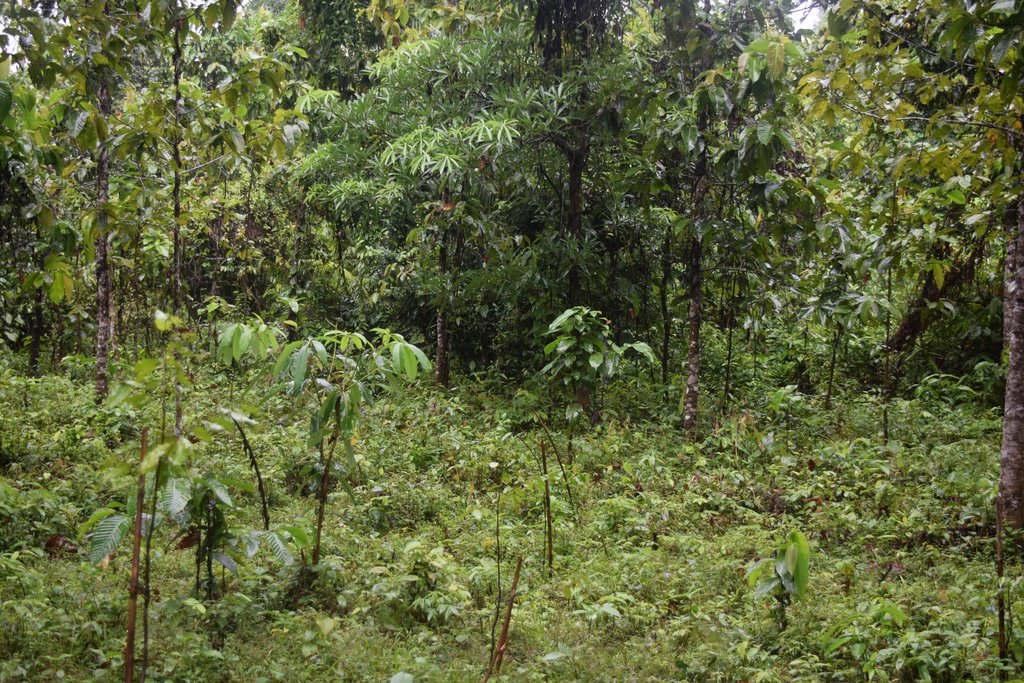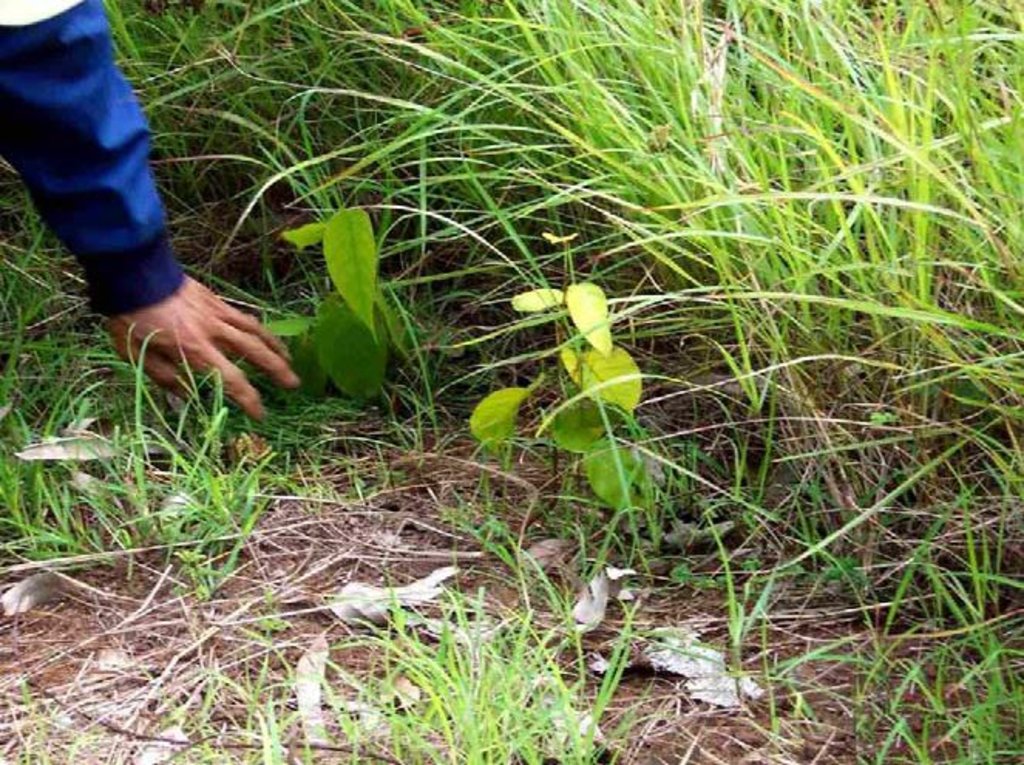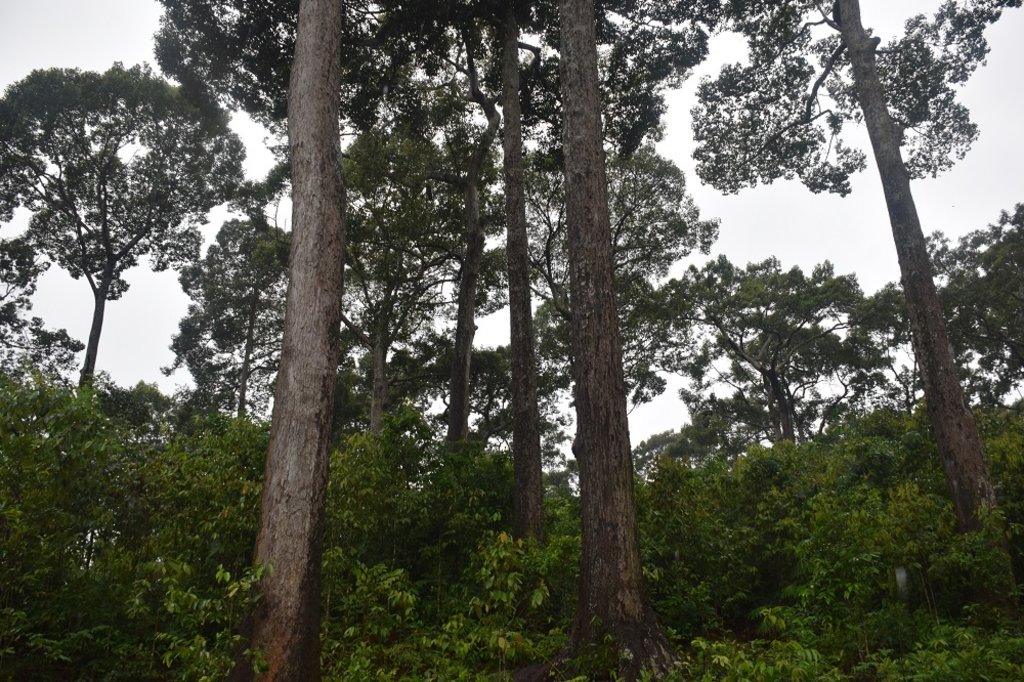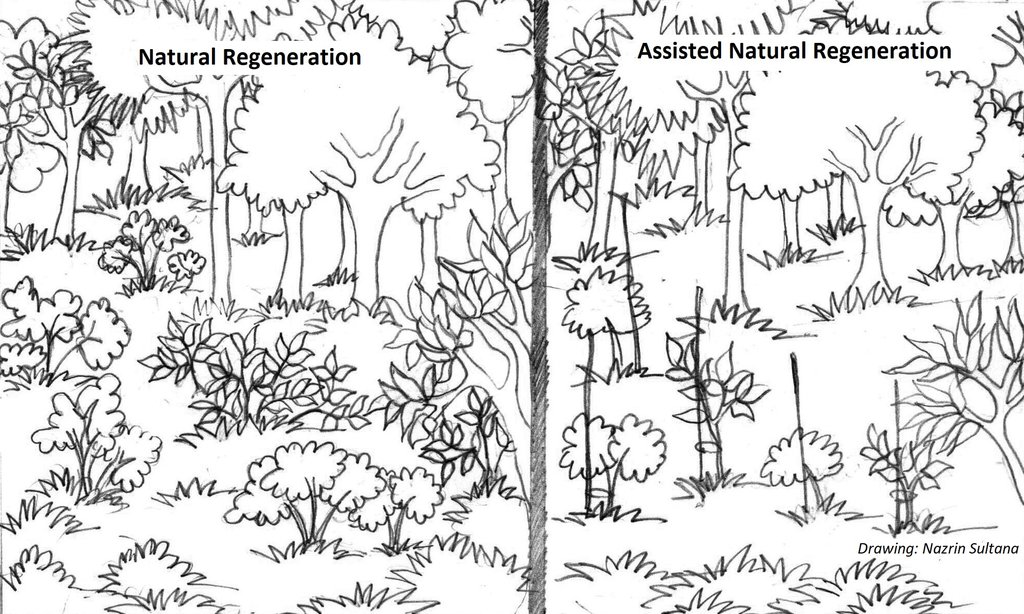Assisted Natural Regeneration [Bangladesh]
- Création :
- Mise à jour :
- Compilateur : Fazlay Arafat
- Rédacteur : –
- Examinateurs : Nicole Harari, Rima Mekdaschi Studer, Ursula Gaemperli
ANR
technologies_4372 - Bangladesh
Voir les sections
Développer tout Réduire tout1. Informations générales
1.2 Coordonnées des personnes-ressources et des institutions impliquées dans l'évaluation et la documentation de la Technologie
Personne(s)-ressource(s) clé(s)
exploitant des terres:
Morshed Hoq Mahabub
Bangladesh Forest Department
Bangladesh
exploitant des terres:
Islam Md. Saiful
Bangladesh Forest Department
Bangladesh
exploitant des terres:
Rahman Md.
Community Patrolling Group (CPG), Medhakocchopia
Bangladesh
Nom du projet qui a facilité la documentation/ l'évaluation de la Technologie (si pertinent)
Decision Support for Mainstreaming and Scaling out Sustainable Land Management (GEF-FAO / DS-SLM)Nom du ou des institutions qui ont facilité la documentation/ l'évaluation de la Technologie (si pertinent)
Bangladesh Forest Department (Bangladesh Forest Department) - BangladeshNom du ou des institutions qui ont facilité la documentation/ l'évaluation de la Technologie (si pertinent)
FAO Bangladesh (FAO Bangladesh) - Bangladesh1.3 Conditions relatives à l'utilisation par WOCAT des données documentées
Le compilateur et la(les) personne(s) ressource(s) acceptent les conditions relatives à l'utilisation par WOCAT des données documentées:
Oui
1.4 Déclaration sur la durabilité de la Technologie décrite
Est-ce que la Technologie décrite ici pose problème par rapport à la dégradation des terres, de telle sorte qu'elle ne peut pas être déclarée comme étant une technologie de gestion durable des terres?
Non
2. Description de la Technologie de GDT
2.1 Courte description de la Technologie
Définition de la Technologie:
Assisted natural regeneration (ANR) is a simple, low-cost forest restoration method that can effectively convert deforested lands to more productive forests.
2.2 Description détaillée de la Technologie
Description:
Medhakachapia National Park (MKNP) is nationally known for protecting the most extensive stands of mature critically endangered Garjan (Dipterocarpus turbinatus) trees in Bangladesh. Other native trees present in MKNP include Telsur Hopea odorata, Boilam Anisoptera scaphula, Gamar Gmelina arborea and Chapalish Artocarpus chaplasha. MKNP is tropical semi-evergreen forest in the low hills of the Fulchari Forest Range and covers 396 hectares. The park is located in Chakaria Upazila, not far from Cox’s Bazar in the southeast part of the country. Originally, the entire park area was densely covered with Garjan forest, but now there are about 9000 mature Garjan trees as many parts have been encroached upon with agriculture. MKNP is bordered by 13 villages where most of the people depend directly or indirectly upon the forest. Encroachment by settlements and agriculture has been associated with illegal tree cutting, hunting, and collection of fuel wood, bamboo and cane and other forest products. These activities are encouraged by sawmills in the vicinity and unemployment. Due to reduced canopy coverage, the forest soils have been exposed degraded. In order to restore forest health, the Bangladesh Forest Department introduced Assisted Natural Regeneration (ANR) practice. The access for public recreation and education and research is allowed inside national park. However, the collection of fuel woods and non-timber forest product from national park area by the local communities is a common scenario here.
ANR aims to accelerate, rather than replace, natural succession processes by removing or reducing barriers to natural forest regeneration such as competition with weedy species and recurring disturbances (e.g., fuel wood collection, grazing, fire and wood harvesting). Compared to conventional reforestation methods, which involve planting tree seedlings, ANR offers the significant advantage avoiding costs associated with propagating, raising, and planting seedlings. ANR is most effectively utilized at the landscape level in restoring the forest protective functions, such as soil protection, and is most suitable for restoring areas where some level of natural succession is already in progress. ANR offers distinct advantages over other forest restoration methods but also has some limitations. ANR is much cheaper to implement and can be applied over larger areas than other restoration planting approaches, but may be less effective in enhancing floristic diversity at the initial stages. Some of ANR’s disadvantages can be overcome by enrichment planting with desirable species. ANR aims to accelerate, rather than replace natural succession process by removing or reducing barriers to natural forest regeneration.
Soil degradation of MKNP has been greatly reduced through practicing ANR and co-management. In MKNP co-management was established on 2009 engaging local communities. As a part of co-management activities, the Forest Department (FD) formed a Community Patrolling Group (CPG) with 35 members from the local community to protect the Garjan trees and look after the whole forest along with forester officers. Under the support from Climate-Resilient Ecosystems and Livelihoods (CREL) project of USAID, the CPG along with FD intensively patrol the forest in rotating groups to ensure that no harm is done to the mature trees and natural seedlings. As a result, sufficient tree regeneration is now taking place and their growth is accelerating. Even where weeds dominate, seedlings of pioneer tree species are often found. The minimum required number of preexisting seedlings to implement ANR depends on the acceptable length of time for the forest to be restored and site-specific conditions that influence the rate of forest recovery. As a general reference, a density range of 200–800 seedlings/ha (>15 cm in height; counting clumps in 1 m2 as one seedling) has been suggested for ANR reforestation, and it has been estimated that at least 700 seedlings/ha are needed during the early treatment period in order to achieve canopy closure within three years. Although the forest restored through ANR in MKNP will have lower commercial value in terms of timber, it will support greater biodiversity and more effectively provide for the subsistence needs of the local people compared to commercial plantations.
2.3 Photos de la Technologie
2.5 Pays/ région/ lieux où la Technologie a été appliquée et qui sont couverts par cette évaluation
Pays:
Bangladesh
Région/ Etat/ Province:
Chittagong division
Autres spécifications du lieu:
Medakacchapia National Park under Cox's Bazar North Forest division
Spécifiez la diffusion de la Technologie:
- répartie uniformément sur une zone
S'il n'existe pas d'informations exactes sur la superficie, indiquez les limites approximatives de la zone couverte:
- 1-10 km2
Est-ce que les sites dans lesquels la Technologie est appliquée sont situés dans des zones protégées en permanence?
Oui
Si oui, veuillez préciser:
Medakacchapia is a National Park with an area of 395.92 ha. In Bangladesh, the access for public recreation and education/research is allowed inside national park. However, the collection of fuel woods and non-timber forest product from national park area by the local communities is a common scenario here.
Map
×2.6 Date de mise en œuvre de la Technologie
Indiquez l'année de mise en œuvre:
2014
2.7 Introduction de la Technologie
Spécifiez comment la Technologie a été introduite: :
- par le biais de projets/ d'interventions extérieures
Commentaires (type de projet, etc.) :
Climate-Resilient Ecosystems and Livelihoods (CREL) project of USAID
3. Classification de la Technologie de GDT
3.1 Principal(aux) objectif(s) de la Technologie
- réduire, prévenir, restaurer les terres dégradées
- préserver l'écosystème
- conserver/ améliorer la biodiversité
- créer un impact social positif
3.2 Type(s) actuel(s) d'utilisation des terres, là où la Technologie est appliquée
Les divers types d'utilisation des terres au sein du même unité de terrain: :
Non

Forêts/ bois
- Forêts (semi-)naturelles/ bois
Forêts (semi-)naturelles/ terres boisées: précisez le mode de gestion:
- Enlèvement du bois mort/ bois de taille
- Tropical semi-evergreen forest
- Dipterocarpus turbinatus, Syzygium grande, Chukrasia tabularis, Hopea odorata
Est-ce que les espèces d’arbres précisées ci-dessus sont des espèces d'arbre arbres à feuilles caduques ou à feuilles persistantes ?
- forêt mixte décidue/ à feuillage persistant
Produits et services:
- Bois d'œuvre (de construction)
- Bois de chauffage
- Fruits et noix
- Conservation/ protection de la nature
- Loisirs/ tourisme
- Oil from Dipterocarpus turbinatus
3.3 Est-ce que l’utilisation des terres a changé en raison de la mise en œuvre de la Technologie ?
Est-ce que l’utilisation des terres a changé en raison de la mise en œuvre de la Technologie ?
- Non (Passez à la question 3.4)
3.4 Approvisionnement en eau
Approvisionnement en eau des terres sur lesquelles est appliquée la Technologie:
- pluvial
3.5 Groupe de GDT auquel appartient la Technologie
- gestion des forêts naturelles et semi-naturelles
- Amélioration de la couverture végétale/ du sol
3.6 Mesures de GDT constituant la Technologie

pratiques végétales
- V1: Couverture d’arbres et d’arbustes

modes de gestion
- M2: Changement du niveau de gestion / d'intensification
Commentaires:
Earlier the ground vegetation was suppressed by weeds and non-valuable plant species. Various alien invasive plant species also disturbed the natural succession process of these area. The management practice also changed from plantation in vacant area to assisted natural regeneration with the involvement of local community.
3.7 Principaux types de dégradation des terres traités par la Technologie

érosion hydrique des sols
- Wt: perte de la couche superficielle des sols (couche arable)/ érosion de surface
- Wg: ravinement/ érosion en ravines

dégradation biologique
- Bc: réduction de la couverture végétale
- Bq: baisse de la quantité/ biomasse
- Bs: baisse de la qualité et de la composition/ diversité des espèces
3.8 Prévention, réduction de la dégradation ou réhabilitation des terres dégradées
Spécifiez l'objectif de la Technologie au regard de la dégradation des terres:
- réduire la dégradation des terres
Commentaires:
Canopy coverage of the area were poor and top soil erosion occurred due to exposed forest cover. Through ANR the canopy coverage will be regained and reduce land degradation.
4. Spécifications techniques, activités, intrants et coûts de mise en œuvre
4.1 Dessin technique de la Technologie
Spécifications techniques (associées au dessin technique):
Step 1: Marking of Woody Regeneration
Once the target area is identified and its boundaries are demarcated, the site is surveyed to assess its succession status and to locate any natural woody regeneration growing in the weedy vegetation. The located seedlings should be clearly marked with stakes. Decision on the minimum size of seedlings to be protected and released depends on the density and distribution of seedlings in the area, as well as budget and time constraints. However, the seedlings should be large enough to have a reasonable chance of survival.
Step 2: Liberation and Tending of Woody Regeneration
The next step is to accelerate the growth of the marked seedlings by reducing competition from the weedy species for water, nutrients, and light. The initial weeding and climber cutting should be implemented at the onset of the rainy season so that the liberated seedlings will have the full growing season of accelerated growth. All competing vegetation such as weeds and climbers within at least 0.5 m radius around the stem of the marked seedlings are removed. In some cases, clumps of woody seedlings may need to be thinned in order to liberate the largest individuals or the more desirable species.
Step 3: Protection from Disturbance.
Protecting against fire and other forms of disturbance is the most important ANR activity. Establishing firebreaks around blocks of ANR-treated sites is important, if the area is prone to fire. If animal grazing is prevalent in the area, fencing should be established, or patrols/guards should be assigned to protect the site from such activity. Long-term community involvement and support is critical in preventing the re-occurrence of disturbance events that will set back succession to the before-treatment state.
Step 4: Maintenance and Enrichment Planting.
It is suggested that the maintenance of weeding, and liberation of any additional seedlings that establish or that are newly found, should be conducted three times in first two years and two times in next two years. In the fifth year one climber cutting should be conducted in rainy season. The frequency of maintenance operations can be adjusted according to field observation and monitoring data on the growth of the liberated seedlings and the density of natural woody regeneration. Enrichment planting can also be carried out to accelerate canopy closure, add useful tree species, and increase floral diversity. Even after the restoration of canopy cover, large-seeded primary forest trees and rare species are unlikely to colonize naturally. If restoring some of the floral diversity of the original forest is one of the restoration objectives, species or functional groups of trees lacking in natural regeneration will need to be planted either at the initial treatment stage or after canopy closure depending on the ecological requirements of the species.
Auteur:
Nazrin Sultana
Date:
16/04/2019
4.2 Informations générales sur le calcul des intrants et des coûts
Spécifiez la manière dont les coûts et les intrants ont été calculés:
- par superficie de la Technologie
Indiquez la taille et l'unité de surface:
1 hectare
Si vous utilisez une unité de superficie locale, indiquez le facteur de conversion vers un hectare (p.ex. 1 ha = 2.47 acres): 1 ha = :
1 ha = 2.47 acres
autre/ monnaie nationale (précisez):
BDT
Indiquez le taux de change des USD en devise locale, le cas échéant (p.ex. 1 USD = 79.9 réal brésilien): 1 USD = :
84,0
Indiquez le coût salarial moyen de la main d'œuvre par jour:
500 BDT
4.3 Activités de mise en place/ d'établissement
| Activité | Calendrier des activités (saisonnier) | |
|---|---|---|
| 1. | Site preparation (Boundary demarcation, site map preparation with GPS, marking of woody regeneration) | May-June |
| 2. | Care and maintenance of natural regeneration (liberation and tending of woody regeneration, protection from disturbance) | June-July |
4.4 Coûts et intrants nécessaires à la mise en place
| Spécifiez les intrants | Unité | Quantité | Coûts par unité | Coût total par intrant | % des coût supporté par les exploitants des terres | |
|---|---|---|---|---|---|---|
| Main d'œuvre | Survey for map preparation and marking of woody regeneration | person-days | 1,0 | 500,0 | 500,0 | |
| Main d'œuvre | Tying up seedlings and young trees | person-days | 4,0 | 500,0 | 2000,0 | |
| Main d'œuvre | Tending of woody regeneration | person-days | 10,0 | 500,0 | 5000,0 | |
| Main d'œuvre | Application of fertilizers | person-days | 4,0 | 500,0 | 2000,0 | |
| Equipements | Weeding equipment (manual weeding tool) | lump sum | 1,0 | 1000,0 | 1000,0 | |
| Equipements | Bamboo sticks for tying up seedlings | pieces | 800,0 | 2,0 | 1600,0 | |
| Equipements | Rope | lump sum | 1,0 | 1000,0 | 1000,0 | |
| Engrais et biocides | Compost fertilizer | Kg | 625,0 | 4,0 | 2500,0 | |
| Matériaux de construction | Rod, Cement, Sand, Khoa, etc for RCC signboard | Lump sum | 1,0 | 1000,0 | 1000,0 | |
| Coût total de mise en place de la Technologie | 16600,0 | |||||
| Coût total de mise en place de la Technologie en dollars américains (USD) | 197,62 | |||||
Si le coût n'est pas pris en charge à 100% par l'exploitant des terres, indiquez qui a financé le coût restant:
Bangladesh forest department is the land user and the total cost of the establishment borne by CREL project
4.5 Activités d'entretien/ récurrentes
| Activité | Calendrier/ fréquence | |
|---|---|---|
| 1. | 1st year weeding | 3 times |
| 2. | 2nd year weeding | 3 times |
| 3. | 3rd year weeding | 2 times |
| 4. | 4th year weeding | 2 times |
| 5. | 5th year climber cutting | 1 time |
4.6 Coûts et intrants nécessaires aux activités d'entretien/ récurrentes (par an)
| Spécifiez les intrants | Unité | Quantité | Coûts par unité | Coût total par intrant | % des coût supporté par les exploitants des terres | |
|---|---|---|---|---|---|---|
| Main d'œuvre | 1st year weeding | person-days | 15,0 | 500,0 | 7500,0 | |
| Main d'œuvre | 2nd year weeding | person-days | 15,0 | 500,0 | 7500,0 | |
| Main d'œuvre | 3rd year weeding | person-days | 10,0 | 500,0 | 5000,0 | |
| Main d'œuvre | 4th year weeding and 5th year climber cutting | person-days | 15,0 | 500,0 | 7500,0 | 100,0 |
| Equipements | Weeding equipment (manual weeding tools) | lump sum | 1,0 | 1000,0 | 1000,0 | |
| Coût total d'entretien de la Technologie | 28500,0 | |||||
| Coût total d'entretien de la Technologie en dollars américains (USD) | 339,29 | |||||
Si le coût n'est pas pris en charge à 100% par l'exploitant des terres, indiquez qui a financé le coût restant:
The 4th year weeding and 5th year climber cutting borne by forest department
4.7 Facteurs les plus importants affectant les coûts
Décrivez les facteurs les plus importants affectant les coûts :
The most important factor affecting the costs is labor
5. Environnement naturel et humain
5.1 Climat
Précipitations annuelles
- < 250 mm
- 251-500 mm
- 501-750 mm
- 751-1000 mm
- 1001-1500 mm
- 1501-2000 mm
- 2001-3000 mm
- 3001-4000 mm
- > 4000 mm
Spécifiez la pluviométrie moyenne annuelle (si connue), en mm:
3770,00
Spécifications/ commentaires sur les précipitations:
The driest month is December. The greatest amount of precipitation occurs in June.
Zone agro-climatique
- humide
Mean annual temperature is 25.6 °C
5.2 Topographie
Pentes moyennes:
- plat (0-2 %)
- faible (3-5%)
- modéré (6-10%)
- onduleux (11-15%)
- vallonné (16-30%)
- raide (31-60%)
- très raide (>60%)
Reliefs:
- plateaux/ plaines
- crêtes
- flancs/ pentes de montagne
- flancs/ pentes de colline
- piémonts/ glacis (bas de pente)
- fonds de vallée/bas-fonds
Zones altitudinales:
- 0-100 m
- 101-500 m
- 501-1000 m
- 1001-1500 m
- 1501-2000 m
- 2001-2500 m
- 2501-3000 m
- 3001-4000 m
- > 4000 m
Indiquez si la Technologie est spécifiquement appliquée dans des:
- non pertinent
5.3 Sols
Profondeur moyenne du sol:
- très superficiel (0-20 cm)
- superficiel (21-50 cm)
- modérément profond (51-80 cm)
- profond (81-120 cm)
- très profond (>120 cm)
Texture du sol (de la couche arable):
- moyen (limoneux)
Texture du sol (> 20 cm sous la surface):
- moyen (limoneux)
Matière organique de la couche arable:
- moyen (1-3%)
5.4 Disponibilité et qualité de l'eau
Profondeur estimée de l’eau dans le sol:
5-50 m
Disponibilité de l’eau de surface:
bonne
Qualité de l’eau (non traitée):
faiblement potable (traitement nécessaire)
La qualité de l'eau fait référence à:
eaux de surface
La salinité de l'eau est-elle un problème? :
Non
La zone est-elle inondée?
Non
5.5 Biodiversité
Diversité des espèces:
- moyenne
Diversité des habitats:
- moyenne
5.6 Caractéristiques des exploitants des terres appliquant la Technologie
Sédentaire ou nomade:
- Sédentaire
Orientation du système de production:
- exploitation mixte (de subsistance/ commerciale)
Revenus hors exploitation:
- moins de 10% de tous les revenus
Niveau relatif de richesse:
- pauvre
Individus ou groupes:
- employé (entreprise, gouvernement)
Niveau de mécanisation:
- travail manuel
Genre:
- femmes
- hommes
Age des exploitants des terres:
- jeunes
- personnes d'âge moyen
- personnes âgées
5.7 Superficie moyenne des terres utilisées par les exploitants des terres appliquant la Technologie
- < 0,5 ha
- 0,5-1 ha
- 1-2 ha
- 2-5 ha
- 5-15 ha
- 15-50 ha
- 50-100 ha
- 100-500 ha
- 500-1 000 ha
- 1 000-10 000 ha
- > 10 000 ha
Cette superficie est-elle considérée comme de petite, moyenne ou grande dimension (en se référant au contexte local)?
- petite dimension
5.8 Propriété foncière, droits d’utilisation des terres et de l'eau
Propriété foncière:
- état
Droits d’utilisation des terres:
- communautaire (organisé)
Droits d’utilisation de l’eau:
- accès libre (non organisé)
Est-ce que les droits d'utilisation des terres sont fondés sur un système juridique traditionnel?
Non
Précisez:
Under co-management system
Commentaires:
Co-management of forest ensures active participation of all concerned parties in the management or maintenance of natural resources on the basis of consensus among the stakeholders involved in the management of the natural resources of an area
5.9 Accès aux services et aux infrastructures
santé:
- pauvre
- modéré
- bonne
éducation:
- pauvre
- modéré
- bonne
assistance technique:
- pauvre
- modéré
- bonne
emploi (par ex. hors exploitation):
- pauvre
- modéré
- bonne
marchés:
- pauvre
- modéré
- bonne
énergie:
- pauvre
- modéré
- bonne
routes et transports:
- pauvre
- modéré
- bonne
eau potable et assainissement:
- pauvre
- modéré
- bonne
services financiers:
- pauvre
- modéré
- bonne
6. Impacts et conclusions
6.1 Impacts sur site que la Technologie a montrés
Impacts socio-économiques
Production
production de bois
Commentaires/ spécifiez:
ANR support the growth of woody vegetation and regular monitoring of ANR also provide security to the mature trees of the stand
qualité des forêts/ bois
production forestière non ligneuse
risque d'échec de la production
surface de production
Commentaires/ spécifiez:
Through ANR the fellow and degraded forest land now bring under productive forest
gestion des terres
Commentaires/ spécifiez:
ANR is a comparatively easy method than clear felling with artificial regeneration, mixed plantation or enrichment plantation to manage forest area
Revenus et coûts
diversité des sources de revenus
Commentaires/ spécifiez:
The local communities can collect NTFP from the ANR site. Due to the increase of vegetation and presence of wildlife in MKNP, the area also attract tourists. The CPG people also worked as tourist guide
Impacts socioculturels
opportunités culturelles
Commentaires/ spécifiez:
aesthetic beauty of forest improved
possibilités de loisirs
Commentaires/ spécifiez:
eco-tourism increased
connaissances sur la GDT/ dégradation des terres
situation des groupes socialement et économiquement désavantagés
Commentaires/ spécifiez:
Poor people working in Community Patrolling Group (CPG) taking care of ANR with forest department. Social status of these poor people improved.
Impacts écologiques
Cycle de l'eau/ ruissellement
ruissellement de surface
nappes phréatiques/ aquifères
évaporation
Commentaires/ spécifiez:
Due to increased canopy coverage evaporation decreased
Sols
humidité du sol
couverture du sol
perte en sol
cycle/ recharge des éléments nutritifs
matière organique du sol/ au dessous du sol C
Biodiversité: végétale, animale
Couverture végétale
biomasse/ au dessus du sol C
diversité végétale
espèces étrangères envahissantes
Commentaires/ spécifiez:
Through ANR only native plant species promoted to grow here
diversité animale
Commentaires/ spécifiez:
Animal diversity increased as the habitat improved
espèces bénéfiques
diversité des habitats
Commentaires/ spécifiez:
habitat diversity increased with the canopy coverage and tree density improvement
Réduction des risques de catastrophe et des risques climatiques
glissements de terrains/coulées de débris
émissions de carbone et de gaz à effet de serre
6.2 Impacts hors site que la Technologie a montrés
flux des cours d'eau fiables et stables en saison sèche
Commentaires/ spécifiez:
Due to the presence of vegetation on slope the stream flow become stable
envasement en aval
impact des gaz à effet de serre
6.3 Exposition et sensibilité de la Technologie aux changements progressifs et aux évènements extrêmes/catastrophes liés au climat (telles que perçues par les exploitants des terres)
Changements climatiques progressifs
Changements climatiques progressifs
| Saison | Augmentation ou diminution | Comment la Technologie fait-elle face à cela? | |
|---|---|---|---|
| températures annuelles | augmente | bien | |
| températures saisonnières | été | augmente | bien |
| précipitations annuelles | décroît | modérément | |
| précipitations saisonnières | saison des pluies/ humide | augmente | modérément |
Extrêmes climatiques (catastrophes)
Catastrophes hydrologiques
| Comment la Technologie fait-elle face à cela? | |
|---|---|
| glissement de terrain | pas bien |
Commentaires:
Note to coping with landslides; Due to the events of landslides in the upper slope sometimes the seedlings and young trees suffered at the foot slope. The degraded upland area can be recovered through ANR with enrichment planting to reduces the events of landslides and slope stabilization.
6.4 Analyse coûts-bénéfices
Quels sont les bénéfices comparativement aux coûts de mise en place (du point de vue des exploitants des terres)?
Rentabilité à court terme:
légèrement négative
Rentabilité à long terme:
très positive
Quels sont les bénéfices comparativement aux coûts d'entretien récurrents (du point de vue des exploitants des terres)?
Rentabilité à court terme:
légèrement négative
Rentabilité à long terme:
très positive
6.5 Adoption de la Technologie
- 1-10%
De tous ceux qui ont adopté la Technologie, combien d'entre eux l'ont fait spontanément, à savoir sans recevoir aucune incitation matérielle, ou aucune rémunération? :
- 91-100%
6.6 Adaptation
La Technologie a-t-elle été récemment modifiée pour s'adapter à l'évolution des conditions?
Non
6.7 Points forts/ avantages/ possibilités de la Technologie
| Points forts/ avantages/ possibilités du point de vue de l'exploitant des terres |
|---|
| It is a low cost intervention to regain the protective roles of the forest. |
| Community Patrolling Group (CPG) are involved in maintenance of ANR forest through co-management of natural resources. Regular patrolling activity reduces the disturbance in forest and help to prevent land degradation. |
| Points forts/ avantages/ possibilités du point de vue du compilateur ou d'une autre personne ressource clé |
|---|
| Biodiversity conservation and wildlife habitat restoration are accelerated through ANR. |
6.8 Faiblesses/ inconvénients/ risques de la Technologie et moyens de les surmonter
| Faiblesses/ inconvénients/ risques du point de vue de l’exploitant des terres | Comment peuvent-ils être surmontés? |
|---|---|
| ANR is less effective in enhancing floral diversity than techniques e.g. mixed plantation, enrichment plantation, selection cum improvement etc. It promotes the existing regeneration and significant portion of regeneration comes from the dominant trees of the stand. | Enrichment plantations with ANR can increase the floral diversity. |
| The forest restored through ANR may have less commercial value in terms of timber compared to commercial plantation. This weakness of ANR is only valid for the forest which is managed for production purpose. | Desirable timber species can be planted as enrichment with ANR. |
| Faiblesses/ inconvénients/ risques du point de vue du compilateur ou d'une autre personne ressource clé | Comment peuvent-ils être surmontés? |
|---|---|
| ANR is suitable for areas where some level of natural succession is in progress. This, because sufficient tree regeneration must be present on the targeted site so their growth can be accelerate through ANR. | Plantation activity with other restoration method should be practiced where natural succession is low or absent. |
7. Références et liens
7.1 Méthodes/ sources d'information
- visites de terrain, enquêtes sur le terrain
number of informants: 04
- interviews/entretiens avec les exploitants des terres
number of informants: 03
- interviews/ entretiens avec les spécialistes/ experts de GDT
number of informants: 02
- compilation à partir de rapports et d'autres documents existants
number of informants: 02
Quand les données ont-elles été compilées (sur le terrain)?
15/01/2019
7.2 Références des publications disponibles
Titre, auteur, année, ISBN:
Shono, K., E. A. Cadaweng & P. B. Durst (2007) Application of assisted natural regeneration to restore degraded tropical forestlands. Restoration Ecology, 15, 620-626.
Disponible à partir d'où? Coût?
http://www.fao.org/forestry/19102-0bf30dd3d800687636a5ddc85e409044a.pdf
7.3 Liens vers les informations pertinentes en ligne
Titre/ description:
Medhakachapia National Park
URL:
http://nishorgo.org/project/medhakachapia-national-park/
7.4 Observations d'ordre général
The WOCAT questionnaire covers all the technical aspects of this SLM practice
Liens et modules
Développer tout Réduire toutLiens
Aucun lien
Modules
Aucun module trouvé


